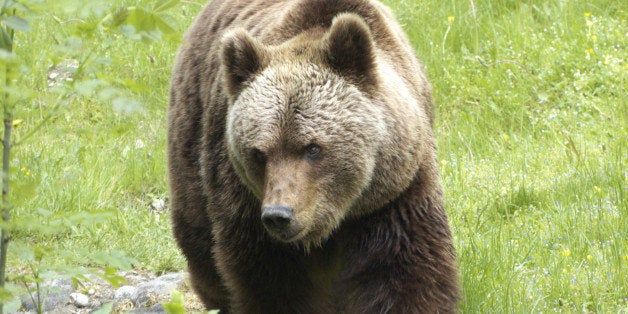
The fate of large carnivores in many places around the world is uncertain, including right here in North America. Some individuals will succumb to poaching. Others will be humanely dispatched for repeated involvement in some form of human-wildlife conflict, as carnivores can become easily habituated to people. Other animals are hunted legally as trophies. It seems that surviving unscathed in increasingly human-dominated landscapes presents a challenge for even the luckiest large carnivore on the planet. Anthropogenic stressors from climate change to pollution continue to place pressure on whole ecosystems, which impact faunal assemblages, communities and interactions among species.
For fragmented populations of apex predators in many regions of the world, numbers are often reported to be dwindling. With that said, you might expect the plight of Europe's brown bear, the continent's largest terrestrial mammal next to the polar bear, to be particularly worrisome. While some populations of brown bears are stable, others are actually increasing.
For these iconic land mammals, cousins of the North American grizzly, there appears to be a glimmer of hope. Indeed, some populations may remain critically endangered, but a status update by the Istituto di Ecologia Applicata with the contributions from the Large Carnivore Initiative for Europe's IUCN/SSC Specialist Group indicates the status of brown bears in Europe is not all disconcerting.
The report states that restored habitat, the return of prey species, public interest and support in recovery efforts and legislation aimed at conserving carnivores in Europe have made it possible to reintroduce (aka rewild) carnivore species. At the very least, these factors have made the sustainable management of large, continuous populations of these majestic animals increasingly feasible.
The population of European brown bears is comprised of 17,000 animals, making this ursid the most abundant large carnivore in the region. Ten populations are currently recognized and they range across 22 countries. These include Scandinavian, Karelian, Baltic, Carpathian, Dinaric‐Pindos, Eastern Balkan, Alpine, Central Apennine, Cantabrian, and Pyrenean populations. The Carpathian population represents the largest population of brown bears in Europe, while the Pyrenean population is the smallest and comprised of as few as 22-27 bears. Incidentally, the Pyrenean population is actually a bit larger than the estimated US population of grizzly bears in the transboundary Cabinet-Yaak Ecosystem of North America, which is a targeted recovery zone for the grizzly in the Lower 48.
An assessment of large carnivore recovery efforts, which appeared in the journal Science last year, suggests that coexistence between humans and large carnivores seems to not only be possible, it has become particularly effective as a management strategy. Indeed, the land-sharing model, which is dictated by a landscape-scale approach to conservation seems to be working for bears and other large carnivores in Europe.
The authors assert that this approach has often been dismissed in recent years given that human overpopulation and overconsumption continue to drive population declines for wildlife species in general. Historically, particular concern for human-carnivore conflict has encouraged conservationists working in such human-dominated landscapes to choose alternatives like a separation model, which involves managing populations in protected areas. The separation model has its origin in North America and been adopted in the developing world.
Since most European brown bears live outside protected areas, according to the updated census report and demographic study, a coexistence model seems to be of great value to large carnivore conservation. In fact, the authors suggest that had the separation model been instituted, there would be no bears and other large carnivores in Europe because existing protected areas are too small to support them.
